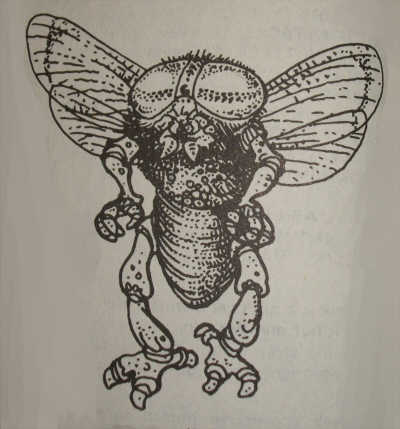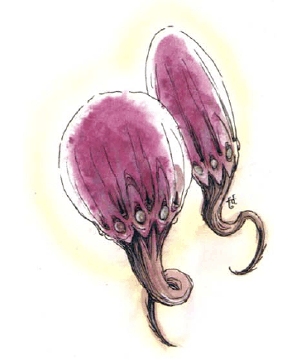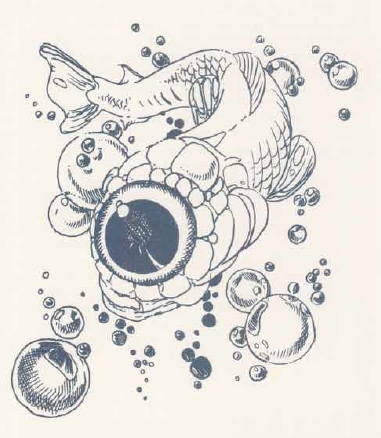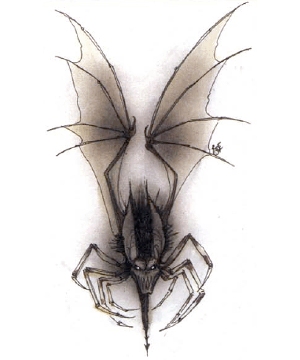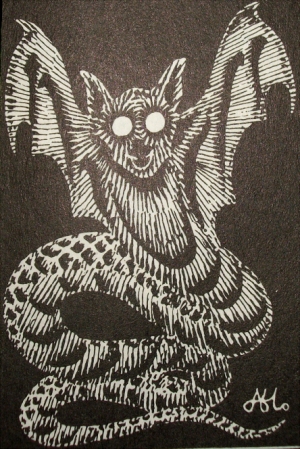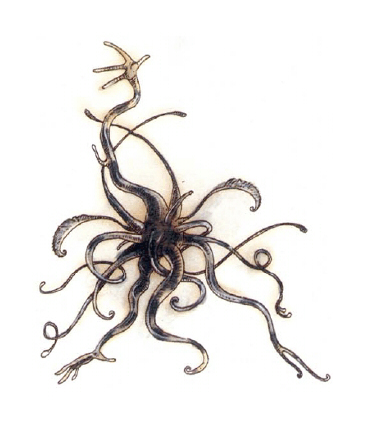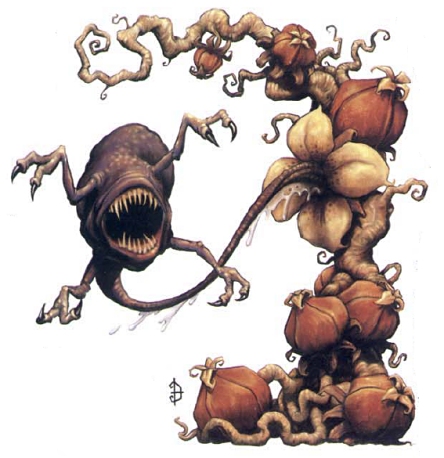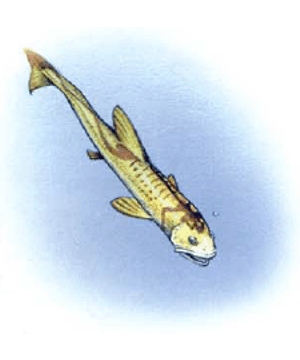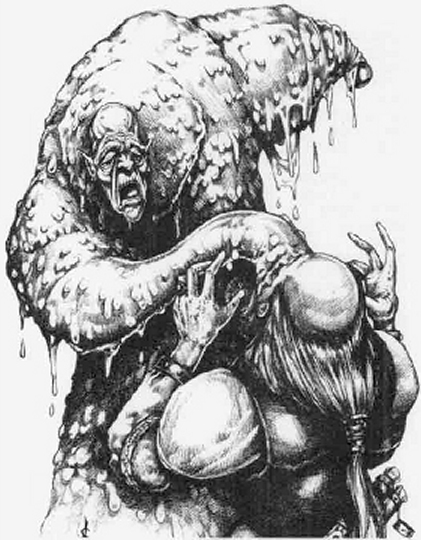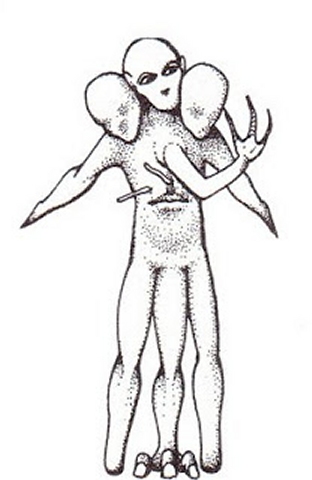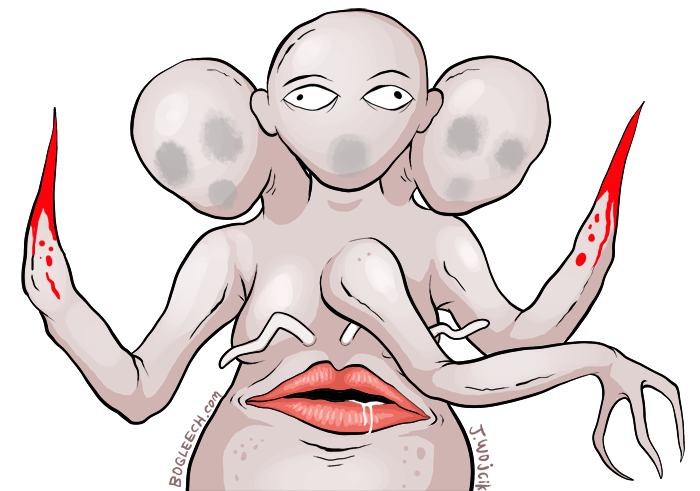|
A Dungeons and Dragons Monster Review by Jonathan Wojcik
Up to now, my "Dungeons and Dragons" monster reviews have fallen into two categories: either a list of monsters I like from a particular family, such as Fiends, or a little journey through the artistic evolution of one particular monster, like the Aboleth. For every monster the average gamer can readily name, however, there are several dozen more who just...didn't take off. Monsters printed once, maybe twice, before fading back into obscurity, neither embraced nor reviled widely enough to endure. In many cases, these D-listers were admittedly mediocre - another subtle variation on an ordinary zombie, another "slightly smarter than usual" animal - but many others were at least as interesting as popular mainstays like the Owlbear or Cloaker. Here we'll be looking at a range of monsters that, while seldom published and seldom remembered, I always thought were worth at least one more look.
So maybe I'm a little predictable, but this anthropomorphic fly was one of the first things I laid eyes upon in the original Fiend Folio, and I probably don't need to explain that it was love at first sight. While the name "assassin bug" refers to large, predatory Hemiptera in the real world, these "assassin bugs" are child-sized bluebottle flies with four curiously human (according to the text, at least) arms and legs who require humanoid races, especially pure-blooded Homo sapiens, as incubators for their larvae. Hunting in adorable mated pairs, it's up to the male to paralyze potential hosts with his toxic saliva so the female can implant her parasitic maggots and promptly die. Parasitoid monsters were never in any short supply in the D&D universe. In fact, the same book features at least half a dozen more, including a human-headed wasp, but you know me and fly-creatures. I could have easily seen these guys expanded into a semi-intelligent race, not necessarily malevolent, but with only one unfortunate means of sustaining their babies. Nothing personal! Maybe you could find a way to turn them on your enemies. Yeah, those other humans around, red crests on their helmets? Packed with nutrition.
This oddball (oddballs?) from Dragon is a floating, venomous, swamp dwelling predator with inexplicable "dual" bodies. We're actually looking at just one Xantravar, here. One balloon-like bulb can inject paralyzing venom (sounds familiar...) and the other can rapidly drain blood, both connected only by some sort of "energy field." It isn't really any different from battling two monsters at once, but it's at least an interesting bit of lore. Amphibious, the stinging bags lurk in swamps where they hide in dirty water or heavy fog, and for an added kick, flame damage will detonate them into giant, deadly fireballs. A strange, simple, neat little monster that could at least make a memorable encounter in a murky bog. Perhaps they would have left a more lasting impression if their double-bodied nature had any sort of gameplay mechanic, which it unfortunately did not. You could always pull the old "both have to die at once or it never dies at all" routine, or give them some appropriate post-mortem use, like the two bodies also work as limitless two-way communication devices. It's a Xantraphone!
This little cutie goes even farther back than the original "Monster Manual," but would only get an illustration just once in any first-party publication, the second edition Monstrous Compendium Annual Volume II. Filling a fun little ecological niche, these tiny, scavenging fish are perfectly transparent except for their huge eyeballs, giving the impression of a bodiless eye drifting in the water. Though not very strong themselves, their paralyzing gaze makes them helpful symbionts of larger, nastier marine predators!
I always love those monsters who exist just to make life hell for spellcasters, who you have to admit can stand to be knocked down a peg now and then. The Magebane, despite its scary appearance, is one of the less terrifying but still creative instances. Invisible to everyone but its chosen magic-wielding host, the ghoulish little bat-spider-wasp will feed on magical energy every time a spell is cast, weakening or even neutralizing its effects. On the upside, it will also do its best to protect its host from harm in any way it can, though it's not very strong, it's not very bright, it doesn't have any magical powers and its stinger-like tail isn't even venomous. It's basically like having a highly territorial, invisible pet bird that doesn't listen. If its little bat-brain thinks someone or something is being a little too threatening to its tasty, tasty wizard, it will do its best to like, scratch them up really bad, I guess. Actually, that would be pretty damn awesome to have around if not for the spell-eating. Besides convincing your friends that an invisible bat is eating your magic, the easiest way to get rid of a Magebane is just to cross paths with a more powerful (appetizing) spellcaster and let it be their problem, which could be some damn satisfying revenge against an arch-rival. Another alternative is to bump into someone else who already has a Magebane, at which point the two parasites will fly away together to make little Magebanes, a happy ending if there ever was one.
Another from the original Fiend Folio, this bat-headed snake with uselessly small wings looked terrifying to me as a child, a certain otherworldly intensity to its simple ink drawing. I suppose I can see why it was never that popular, though; its brilliant, shining eyes acted as an instantaneous death ray once every twenty four hours, making it one of those monsters that only exists to punish players who are getting too cocky. It was eventually reprinted in the third-party "Tome of Horrors," but I can't say its illustration was nearly as ominous. I unfortunately have little else to say about this one...I just think it's cool.
What's not to love about the Suwyze? A cluster of tentacles and boneless arms nearly twenty feet across sounds pretty dangerous, but this poor thing is actually a frail, sensitive and nearly defenseless coward, spooked by just about anything new and foreign. It exists almost exclusively in symbiosis with more powerful beings - especially Wizards - to whom it serves as a sentient security system, alerting its master to whatever intrusion it picks up in its ultra-sensitive feelers. Now, I say nearly defenseless because the Suwyze does have one special trick up its sleeve. A trick that kind of makes you want to cry. If a Suwyze can't run and hide from a battle, its first line of defense is to magically force its opponents to simultaneously perceive the fight from its own perspective in a desperate pity-play. A grossly exaggerated pity play. While it makes a show of screaming in pain and terror, its foes have to watch a dramatized, Court-TV-quality view of themselves as cruel, merciless savages, every blow considerably more graphic and brutal than the reality. It's a monster with a magical guilt-trip attack. As if it weren't sympathetic enough, the Suwyze also finds its guard duties mind-numbingly boring. It's the best in the business, sure, and it would probably die without the protection of a master, but it still doesn't take the role very seriously. To the Suwyze, security work is only a "distraction" while it pursues more intellectual aspirations, fancying itself a brilliant philosopher. It's also pretty sure it has "contacts" in some far-away utopian city run entirely by Suwyze scholars, but its original write-up makes a point of saying this is probably all delusion. If this isn't one of the most endearing, lovable giant balls of antennae ever conceived, what is?
Deadly plant life is a dime a dozen in D&D, but seldom is it quite so grotesque as the Bloodsipper, technically neither an animal nor plant, but an unnatural mutant life form associated with the "Far Realm." Every fleshy pod along its slimy, meaty vine houses a blubbery, tadpole-like feeding body, connected to the mother plant by a long, elastic umbilical cord. Their feeding behavior is a bit closer to "guzzling" than "sipping," and they thrive especially well in - what else? - deep caverns and dungeons tainted by dark, alien energies. Why settle for another breed of vampiric moss, flesh-boring wildgrass or exploding mushrooms when you could send your players tip-toeing through a nauseating minefield of stinking skin-flowers, surprise space leeches ready to pop out like a hellish game of Vampiric Whack-a-mole?
I've always heard that underwater scenarios aren't all that commonly played or popular in the D&D community. I'm not sure how true that is, but what DM could resist an excuse to unleash the Death Minnow? Another one that I believe came from Dragon before it was published in one of the Monstrous Compendiums, this finger-length little fishy is actually a magical guardian beast even rumored to be another Aboleth invention. With magical control over the size of itself and its stomach contents, the cute little fishy can swim up to virtually anything, of any size, swallow it whole and return to normal. You know, like the bonus scene after the credits to Finding Nemo. Imagine the paranoia as a whole party is picked off, one by one, by a damn minnow. Another purely sadistic one, I suppose, but it'd sure give the players something to talk about. You could always even the odds, I suppose, if its shrunken prey had a chance to break the spell and explode the little bastard from the inside.
Marvelously unpleasant, this dribbling heap of jelly is actually a magical construct engineered by a wizard, from a wizard's corpse, to keep other wizards in line. Wizards upon wizards! The dripping, gelatinous hulk still carries the withered head of the wizard it once was - sans eyes - more like a withered, threatening hat than an integrated part of its anatomy, while its two tentacular "arms" end in huge but completely blind eyeballs. It's through these sightless orbs that it punishes its magic-wielding targets, their very touch steadily draining spells from the victim's mind. Naturally, a Magedoom is also surrounded by an anti-magic field, and in case you hadn't guessed, killing a Magedoom releases every spell it's ever "eaten," all at once, in an explosive surge of unpredictable chaos. One thing I love about the Magedoom's original description is how much time it spends describing their smell, even "quoting" a wizard victim with "It's like being assaulted by rotten electric grapefruit." With such a bizarre, disturbing concept, distinct purpose and loving attention to detail, it's really surprising this one slipped through the cracks. The spells it drains are even slowly re-remembered by surviving victims, so it's not even an excessively unfair creature to throw at your players, but something that could certainly mix things up for a while.
Our last one from the Fiend Folio, I promise, the Tirapheg isn't necessarily forgotten, but nor is it appreciated, at least not for what it is. The Tirapheg has actually popped up on more than one website, even Something Awful, to be mocked as one of those silly, stupid old monsters no modern gamer could ever take seriously. Nonsensical and ridiculous, they say. Only good for a joke, they say. Why? Perhaps it will become clear if we take an in-depth look at what a Tirapheg is, and what it does: To start with, the Tirapheg is a subterranean creature of indeterminate origin, resembling a pale, naked, hairless amalgamation of deformed human body parts, its mouthless faces swaying silently as it ambles in the darkness.Haha! That is pretty funny!! The Tirapheg's outermost arms terminate in sharp, bony spikes, used as stabbing implements in combat. Its mouth is situated in its chest, beneath waving, fleshy feelers of unknown purpose, and its central head bears its only eyes; two in the front, one in the back. This coupled with its double-jointed limbs makes it equally comfortable moving forwards or backwards. How droll! The Tirapheg's preferred diet is rotten flesh, and while it's usually reclusive and nonconfrontational, skulking in the shadows and grazing on rancid filth, it's prone to freaking out and trying to kill people for no explained reason. Hilarious! In case that all wasn't comical enough for you, the Tirapheg can also generate two life-like "illusions" of itself in a blinding flash. So life-like, that while they're completely impervious to damage, they can still hurt you, as long as you don't know which one is the original. MY SIDES! Wait, what's that? That's not really all that funny-weird when it's laid out like that? Just the stuff of raw, distilled nightmare from beginning to end? Huh. I could have sworn that reality-distorting masses of fused, stunted appendages with grown-over eye sockets were normally only for the delight of babies.
Haha! |
